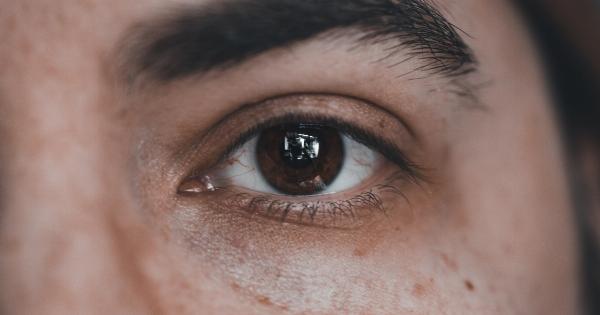When it comes to human communication, the eyes play a crucial role. Not only do they provide us with sensory information about the world around us, but they also convey a wide range of emotions and intentions.
Recent research suggests that the way our eyes move can even reveal our sexual intentions. Understanding this can have profound implications for our interactions and relationships. In this article, we explore the fascinating connection between eye movements and sexual intentions.
What are Eye Movements?
Eye movements refer to the various motions our eyes make, such as fixations, saccades, and smooth pursuit. These movements are controlled by a complex interaction between the muscles in our eyes and the brain’s visual system.
Each type of eye movement serves a specific function and collectively allows us to perceive and interact with the world around us.
The Link Between Eye Movements and Sexual Intentions
Research in recent years has begun to uncover a compelling relationship between eye movements and sexual intentions.
Several studies have focused on the role of eye gaze in determining a person’s level of interest and attraction towards a potential sexual partner.
1. Pupil Dilation
One of the key findings is that pupil dilation, which is controlled by the autonomic nervous system, can indicate sexual interest.
When someone is sexually attracted to another person or is engaged in a sexually arousing situation, their pupils tend to dilate. This dilation occurs unconsciously and can be an automatic physiological response to someone they find appealing or sexually desirable.
2. Eye Contact
Another important aspect of eye movements is eye contact. Making eye contact with someone is a powerful nonverbal cue that can communicate interest, attraction, and even intimacy.
Maintaining eye contact during a conversation with someone you are sexually attracted to can signal your intentions and generate a sense of connection. However, prolonged eye contact can also indicate dominance or intimidation, so it’s essential to be mindful of the context and the other person’s comfort level.
3. Gaze Patterns
Researchers have also investigated gaze patterns during interactions with potential sexual partners. They found that individuals tend to focus on specific areas of the body when assessing sexual appeal.
For instance, men have been observed to focus on a woman’s face, specifically her eyes and lips, whereas women tend to shift their gaze towards men’s upper body and facial features. These gaze patterns can indicate sexual interest and the desire to assess a person’s physical attractiveness.
4. Eye Movements and Emotional Display
Emotions play a crucial role in human interaction, including sexual encounters. Our eyes are instrumental in conveying emotions, such as desire or interest, to our partners.
The way our eyes move, combined with other facial expressions, can elicit emotional responses and convey sexual intentions. Subtle changes in eye movements, such as lingering gazes or rapid eye movements, can enhance the emotional connection between partners and intensify sexual experiences.
5. Cognitive Processing and Eye Movements
Eye movements are closely linked to cognitive processing, including attention, memory, and decision-making. Sexual intentions involve a cognitive evaluation of a potential partner’s attractiveness, compatibility, and desirability.
It has been observed that individuals tend to make more frequent and prolonged eye contact with people they find attractive. This eye contact can indicate a higher level of cognitive processing and engagement, suggesting sexual interest or intent.
Implications and Applications
The observation that eye movements can reveal sexual intentions has numerous implications for various aspects of human interactions. Understanding these connections can be particularly useful in dating, romantic relationships, and even sexual therapy.
Below are some examples of how this knowledge can be applied:.
1. Dating and Attraction
Being aware of the role of eye movements in attraction and sexual interest can help individuals navigate the dating scene more effectively.
Recognizing signs of interest or disinterest based on eye movements can guide decision-making and potentially improve success in forming romantic connections.
2. Nonverbal Communication
Nonverbal communication is a powerful tool when it comes to expressing desires and intentions. Understanding how eye movements contribute to nonverbal communication can enhance our ability to express sexual interest and understand others’ signals.
Developing these skills can lead to more satisfying and fulfilling interpersonal relationships.
3. Sexual Therapy
Eye movements can be incorporated into sexual therapy practices to deepen emotional connections between couples and enhance sexual experiences.
Techniques like maintaining eye contact and mirroring each other’s eye movements can intensify intimacy and increase the pleasure derived from mutual sexual interactions.
Future Directions and Further Research
The relationship between eye movements and sexual intentions is a burgeoning field of research. As technology advances, eye-tracking devices provide a more precise and objective measure of eye movements during social interactions.
This opens up opportunities for exploring the intricacies of eye movements and their correlations with specific sexual thoughts, feelings, and intentions.
Understanding the nuances of these connections can shed light on the complex interplay between physiology, cognition, and social dynamics in the realm of human sexual behavior.































